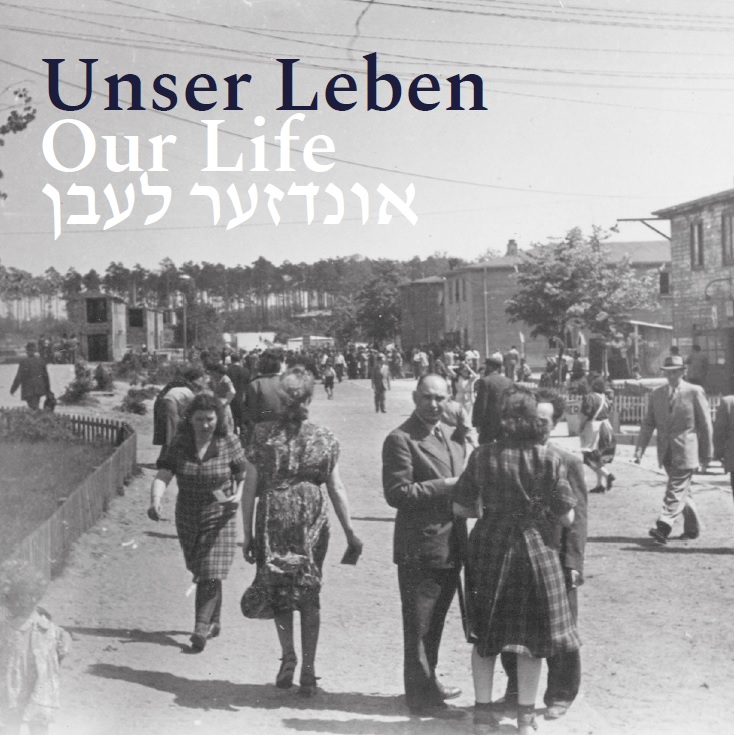
At the end of the 1940s, the understanding of flight and migration in Europe changed significantly. The continent became the stage of the Cold War with a dividing line through Germany and Berlin. But the city remained an important place of refuge for many people even during the period of division. Numerous workers from abroad came to West and East Berlin until 1990. From 1990 on, more and more people from Eastern and Central Europe moved to the city. To this day, constant immigration continues to shape Berlin. On the map, important places of migration and migrant self-assertion are presented in a chronological cross-section.
The map shows transhistorical places of arrival and emigration, such as the former Tempelhof Airport or the Marienfelde Emergency Reception Center, which was established for people who fled from the GDR in the 1950s and today serves as both a memorial site and accommodation for refugees.
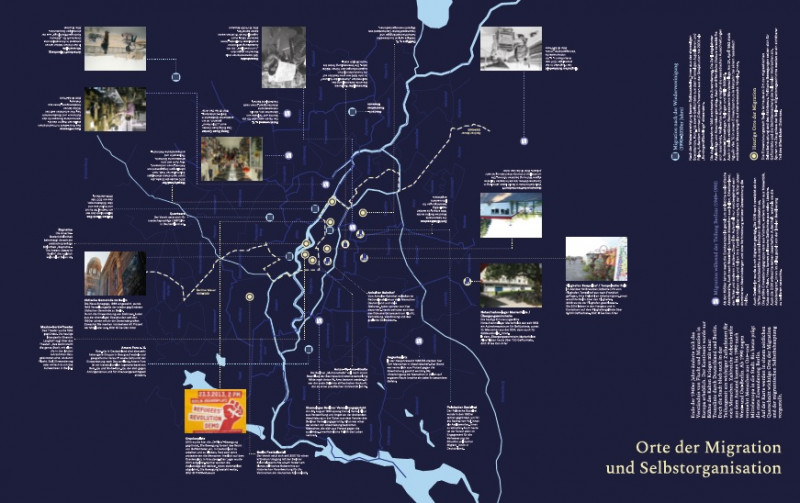
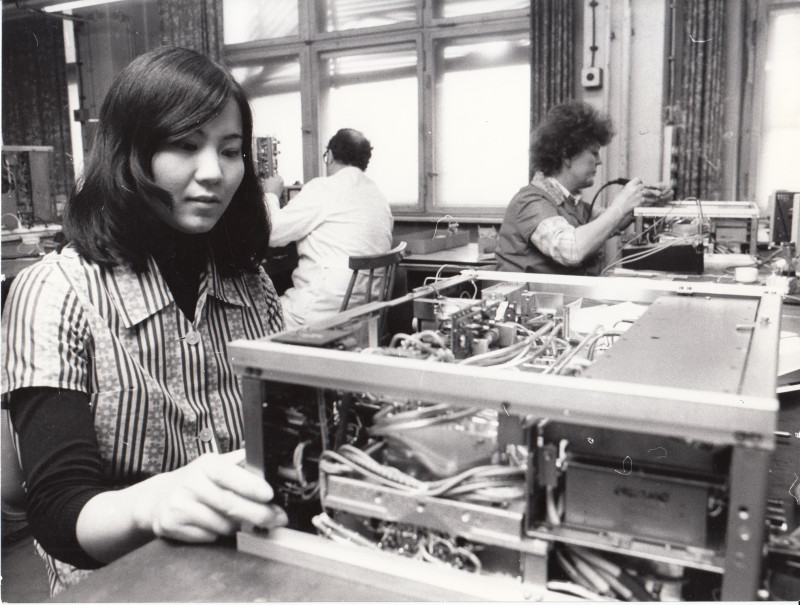
Vietnamese contract workers in Friedrichshain © unknown photographer, Inv.-Nr. 2012/32, FHXB Museum

Schönefeld Airport in the former GDR was a place of arrival for Vietnamese contract workers. © DDR-Bildarchiv / Heinz Schönfeld / Süddeutsche Zeitung, 02435608

The Knorr plant had been producing brakes for rail and road transport since the beginning of the 20th century. Migrant workers from Vietnam had been working here since the 1970s. © Paul Glaser / Süddeutsche Zeitung, 02714041

Dong Xuan Center, Berlin-Marzahn © İsa Can Artar

Gastarbeiter:innen at a demonstration against the “Lummer decree”, 1981 © Jürgen Henschel, Inv. 2017/1905, FHXB Museum
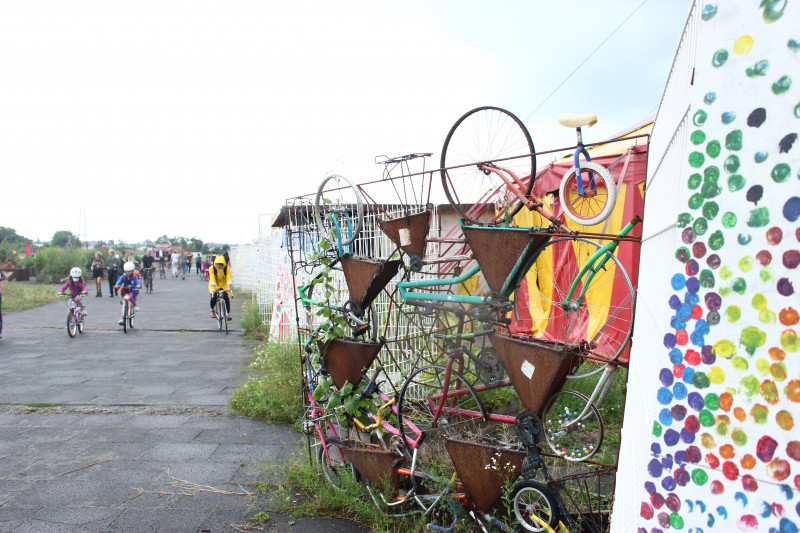
The former Tempelhof Airport, now a public park © İsa Can Artar

Marienfelde Transit Camp Memorial © İsa Can Artar
Beginning in the 1950s, the Federal Republic of Germany specifically recruited numerous foreign workers. People from Italy, Greece, Turkey and other countries came to work in West Berlin. Although their stay was supposed to be temporary, many stayed and brought their family members to join them. From the 1970s, political measures were shaped by deportations and a prevention of further immigration.
East Berlin was also shaped by migration. The German Democratic Republic increasingly recruited workers from socialist brother states starting in the 1970s. The largest group of immigrants came from Vietnam; others came from Mozambique, Cuba or Poland. In addition, there were political refugees from many countries. The GDR also did not want permanent residence, which is why it deliberately tried to isolate the migrant workers from the local population in everyday life.

Today, places such as the Dong Xuan Center in Lichtenberg and the Viet German association Reistrommel e.V. exemplify the continuity and self-empowerment of Viet German life in Berlin. The house of the former Berlin Administrative Court, in front of which the Turkish asylum seeker Cemal Kemal Altün took his own life in 1983 out of despair over the threat of deportation, represent the flip side of Berlin‘s isolationist policy in the 1970s and 1980s.

The former Tempelhof Airport, now a public park © İsa Can Artar
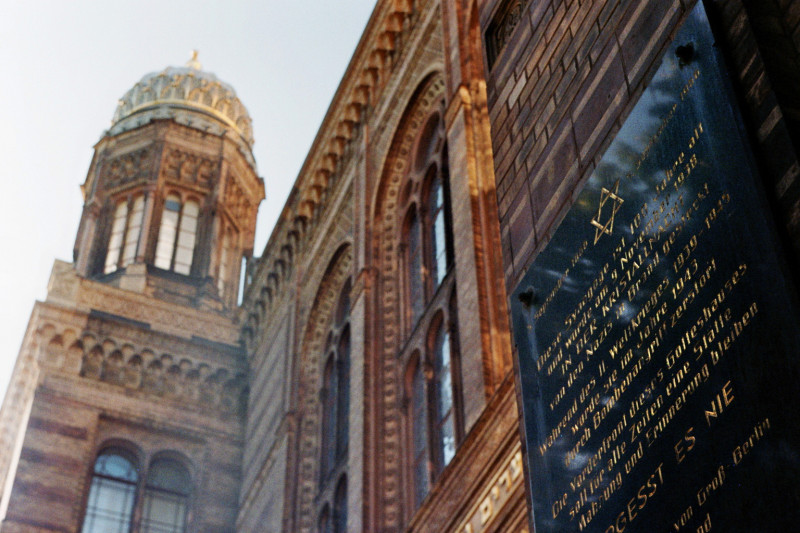
The New Synagogue © İsa Can Artar
After reunification, ethnic Germans from the former Soviet Union, Roma and refugees from the former Yugoslavia and Poland arrived in Berlin. In addition, Jews from the Soviet Union could immigrate as „contingent refugees“ until 2005.
The 1993 reform of asylum law made immigration more difficult. The number of rejected asylum applications and deportations increased. Public discourse also became increasingly heated. The racist riots in Rostock-Lichtenhagen, Solingen and Mölln in 1992-93 caused a worldwide sensation. Right-wing extremists also carried out murder attacks in Berlin: On April 24, 1992, Nguyễn Văn Tú died in a racially motivated knife attack on Vietnamese merchants in a shopping center in Marzahn.
The map shows a selection of places of migrant artistic and activist activity such as the balkan black box festival and post-Soviet, Polish and Roma migrant self-organizations.


The former Tempelhof Airport, now a public park © İsa Can Artar

Marienfelde Transit Camp Memorial © İsa Can Artar

The New Synagogue © İsa Can Artar
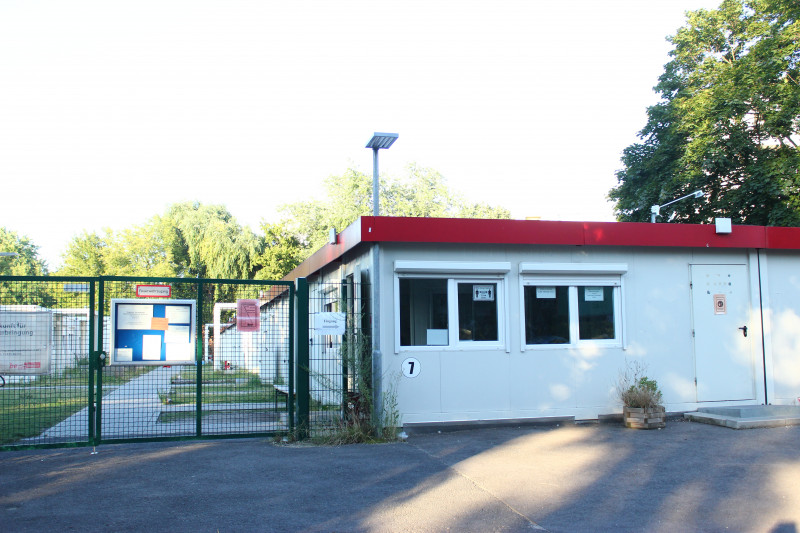
Refugee collective accommodation in Berlin-Kreuzberg © İsa Can Artar
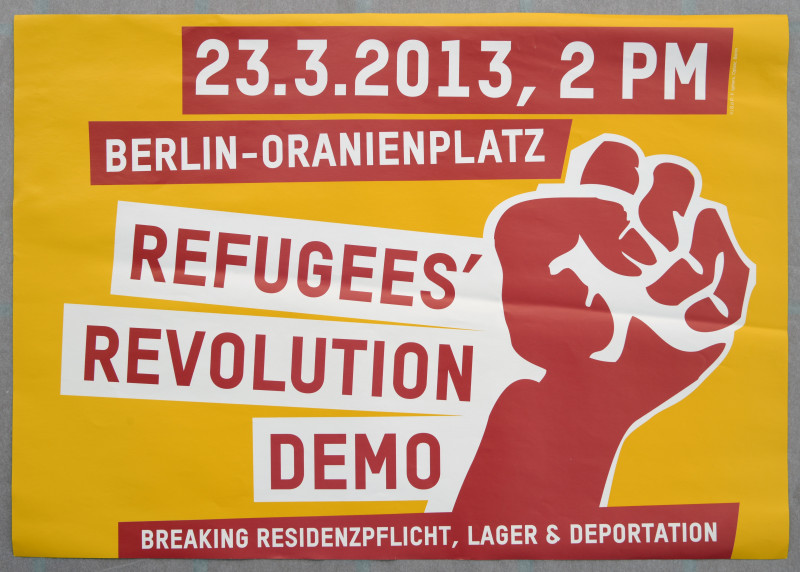
Poster for the Refugees’ Revolution Demonstration on Oranienplatz, 2013 © Inv.-Nr. 2021/21, FHXB Museum
Today, the immigrant city of Berlin is a place of migrant self-assertion and activism. Political movements advocate for refugees and the visualization of colonial crimes. Traces and testimonies of Berlin‘s migration history thus become a visible part of public discourse.
In addition to the Oranienplatz in Kreuzberg, the Maxim Gorki Theater, various migrant selforganizations, and street names exemplify contemporary forms of migrant activism in Berlin.
